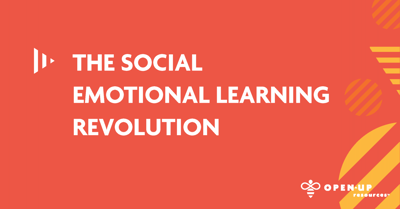 I recently had the opportunity to participate in a panel at SXSW EDU that focused on Social Emotional Learning (SEL). The experience was enlightening, and I learned a lot from the three panelists who sat up there with me, but what surprised (and delighted) me was the sheer number of presentations, panels, and conversations about SEL that took place at the conference.
I recently had the opportunity to participate in a panel at SXSW EDU that focused on Social Emotional Learning (SEL). The experience was enlightening, and I learned a lot from the three panelists who sat up there with me, but what surprised (and delighted) me was the sheer number of presentations, panels, and conversations about SEL that took place at the conference.
The result has been a lot of caring on the surface level without much help to support that caring in a way that truly reaches every student and provides them with the emotional intelligence and other tools, tactics, and knowledge they need to successfully navigate the real world.
But that’s changing.
K–12 experts around the country are turning their eyes to the research on SEL and the positive impact it has on students. The Aspen Institute recently released a report, synthesizing a wide range of research providing evidence that the “major domains of human development—social, emotional, cognitive, linguistic, academic—are deeply intertwined in the brain and in behavior. Moreover, all are central to learning and success.”
The Aspen report draws upon decades of research, including two studies by the Collaborative for Academic, Social, and Emotional Learning (CASEL). The first study (in 2011) found an average of 11–17 percentile-point academic gains when students participated in an SEL program, and a follow-up study (in 2017) found those gains had long-lasting impacts; 3.5 years later, the academic performance of students exposed to SEL programs was an average 13 percentile points higher than their non-SEL peers. And as if those advantages weren’t enough, a benefit-cost analysis also found that SEL interventions provide “a positive return on investment averaging $11 in long-term benefits for every $1 invested.”
The conversation is shifting from awareness building to execution. More and more organizations, districts, schools, and educators are focused on the “how” of meaningful SEL now that they more fully understand the “why.”
It’s an amazing shift to see, and one that will dramatically help kids in the long run.
Inevitably, an increasing number of districts are asking how they can squeeze just one more thing into an already packed academic day. My thought, and the thought of my fellow panel members at SXSW EDU: it should be naturally and meaningfully woven into the instruction that is already happening in the classroom rather than a separate, stand-alone program.
By approaching it this way, students engage with one another, as well as the content, on a deeper level. On top of that, they walk away from each lesson with more than just content knowledge; they come out with the skills to tackle the next lesson—academic or personal—empowered with more poise, patience, and empathy. Teachers who are using an SEL-integrated curriculum will find new levels of content relevance, human connection, and available emotional and intellectual bandwidth infused into their classrooms.
If you’d like to watch our panel on SEL from SXSW EDU 2019, you can watch it below.
If you’d like to learn more about how each of the Open Up Resources curricula foster Social Emotional Learning, please contact us and one of our field specialists will be happy to help.
__________
Jessica Reid Sliwerski, CEO of Open Up Resources, is a former elementary school teacher, literacy coach, and assistant principal. For more information about our curricula, please contact our team.

